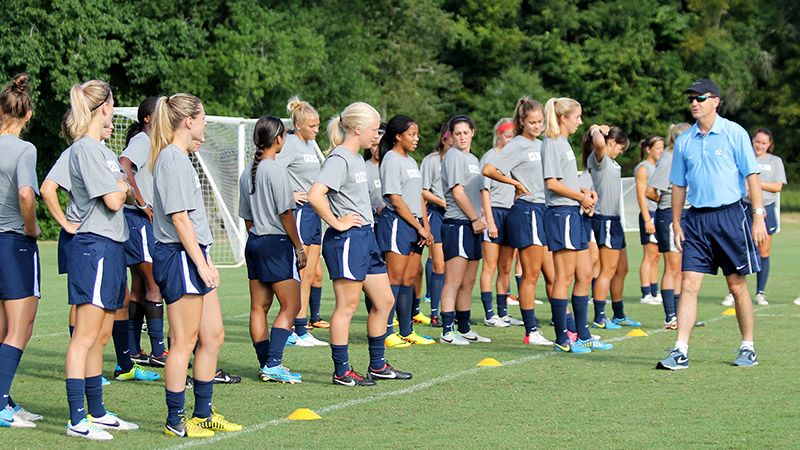{{cta(‘a44ae1e7-de66-4a0a-8b91-6f6ca8a727e3’)}}
There are 28 different categories for which a women’s soccer player at the University of North Carolina receives a score – every day, in practice and in games.
It’s part of an effort by head coach Anson Dorrance to develop what he has labeled a “competitive cauldron,” a developmental environment which encourages – even demands – competition between teammates.
“The main thrust of the competitive cauldron is to drive competition in practice,” says Dorrance, who has led the Tar Heels to 21 NCAA Championships and was the architect of the U.S. Women’s National team program. “If everyone knows that every part of practice is recorded, we are going to get a greater focus and a more competitive spirit to try to win at every aspect of practice.
“We want them to come to practice every day with an attitude that they are going to kick everyone’s butt every single minute of the practice. If we can create that mentality in every player at every practice, the games are going to seem like a vacation compared to practice.”
 There’s little room to doubt that the competitive cauldron works. Dorrance won 800 of his first 900 games with the Tar Heel women and many of the best players in the world spent their college years in the cauldron.
There’s little room to doubt that the competitive cauldron works. Dorrance won 800 of his first 900 games with the Tar Heel women and many of the best players in the world spent their college years in the cauldron.
“I think the value, once I do collect the data, is that the feedback they get every day is extraordinary,” says Dorrance. “They get to see where they need improvement and what they did well.”
But Dorrance discovered an interesting and valuable by-product of collecting objective data on his players’ performances.
You and the Player vs. the Data
In the typical player-coach meeting, there’s a point where the coach is going to say, you need to get better in these areas. Often the player will resist, thinking “Well, here he goes again, criticizing me.” Having the data on hand helps the player understand there is a deficiency, but there’s a way the coach can frame the conversation that can turn the meeting in a very positive direction.
“If you have the data available when you are sitting with a player, you can say, ‘You know what, I think you are better than this,’” said Dorrance. “The player will agree with you. Now it’s a different leadership dynamic. It’s you and the player against the data. It’s a much better leadership connection with the player you are trying to get to reach her potential.
“After all, the kid is just sick and tired of hearing that she can’t connect a pass or she ducks every header or can’t hit the frame. But when you have data showing her those things, you get to sit down with her and say “You’re better than this. Let’s work on it. I’ll help you.”
The data, obviously, helps the player understand where they need to improve, but it also takes away any prejudice the player may think the coach has.
{{cta(‘5a218e30-a29a-41d4-9b2b-9b7e4896cfa5’)}}
“In the course of a player’s four years, all I am trying to do is have them take responsibility and be accountable,” said Dorrance. “If the player believes the reason they are not playing is because the coach doesn’t like her, the player absolves herself of any responsibility. Let’s face it, the first time you take responsibility for yourself is a wonderful step in the right direction toward improvement.”
Do you collect objective data on your players? DRIVN has the capability to make the collection and use of data helpful to your players and team.